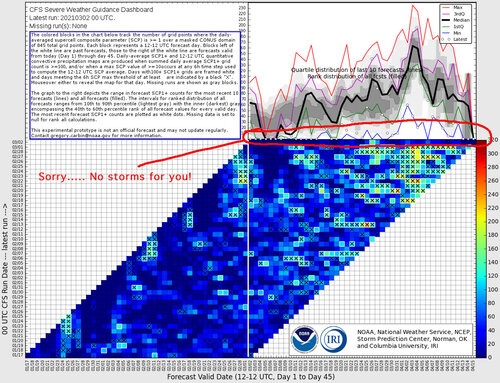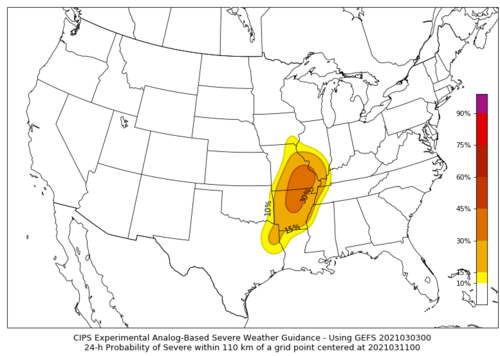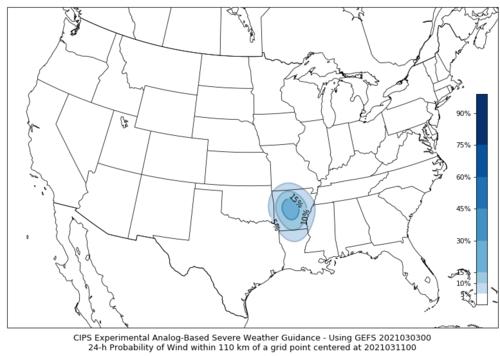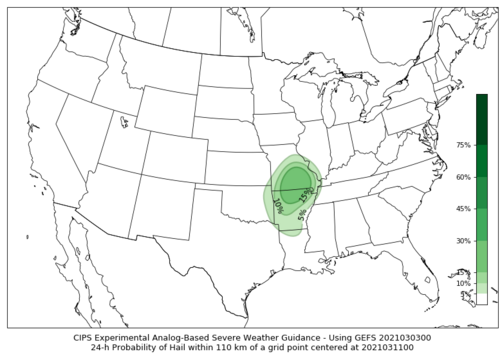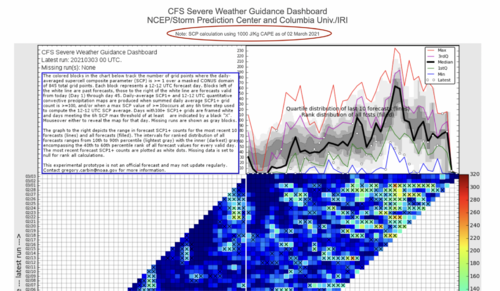adlyons
EF2
Well, happy spring everyone! It being the start of traditional chase season I feel confident enough to lock in a forecast.
Forecast 20201 Tornado Season (MAMJ) :
Counts: Average (754 tornadoes across the CONUS during spring, 1250 plus or minus 50 for the year)
I feel fairly confident on average numbers for the chase season and year. With a moderate La Nina, but complicating factors such as drought, I think we see pretty normal activity. This activity should pick up fairly quickly here over the next two weeks with the first hints of the spring pattern shaping up. Some killers for this would be an early northward retreat of the jet (Aka Death Ridge) cutting into numbers early. This is a distinct possibility given the ongoing drought. A second, perhaps better for us failure mode would be a weak resurgent la nina. This could throw out some higher tornado numbers, though I think this is less likely. Its about 50/50 which side of the coin we end up on, which means I'm going to hedge to average.
Outbreak Days (10+ Tornadoes within 6 hours): Above Average
Its an emerging trend, fewer tornado days, but more tornadoes per day. Im sticking with that. You can define outbreaks in many ways so I'll have to run some stats to verify, but I think we see a more active outbreak pattern going into April and a few very big count days. The forecast is also calling for an above-normal hurricane year. I think we see another active TC tornado year this summer and fall.
Number of EF2+ tornadoes: Well Above Average (Greater than 1 STD above the normal mean)
Im taking a bit of a risk on this one but, with the southeast and eastern half (more populated) of tornado Alley looking more favorable, I'm leaning towards a much higher count of sig tors for the simple fact I expect more of them to hit things. The same trend will probably hold for fatalities.
Chasabillity Score: Average 6/10
My completely scientific and no non-sense chasing index, just kidding it's entirely arbitrary. Not a great year, not a bad year, somewhere right in the middle with a bit more chasing potential. We probably won't be chasing west of I-35 as much as we would like putting a dent into the chaseabillity of some systems, but the average counts combined with a few bigger days will get peoples chasing counts up. Midwestern gang and the southeast should have a decent year. Southern and central plains also won't have much to complain about. Perhaps not the best for the front range and Texas Panhandle guys and gals but a few days spark off. A banner year for a few, but sufficient for most.
We will see where we go from here. Good luck to everyone, stay safe and happy hunting!
Forecast 20201 Tornado Season (MAMJ) :
Counts: Average (754 tornadoes across the CONUS during spring, 1250 plus or minus 50 for the year)
I feel fairly confident on average numbers for the chase season and year. With a moderate La Nina, but complicating factors such as drought, I think we see pretty normal activity. This activity should pick up fairly quickly here over the next two weeks with the first hints of the spring pattern shaping up. Some killers for this would be an early northward retreat of the jet (Aka Death Ridge) cutting into numbers early. This is a distinct possibility given the ongoing drought. A second, perhaps better for us failure mode would be a weak resurgent la nina. This could throw out some higher tornado numbers, though I think this is less likely. Its about 50/50 which side of the coin we end up on, which means I'm going to hedge to average.
Outbreak Days (10+ Tornadoes within 6 hours): Above Average
Its an emerging trend, fewer tornado days, but more tornadoes per day. Im sticking with that. You can define outbreaks in many ways so I'll have to run some stats to verify, but I think we see a more active outbreak pattern going into April and a few very big count days. The forecast is also calling for an above-normal hurricane year. I think we see another active TC tornado year this summer and fall.
Number of EF2+ tornadoes: Well Above Average (Greater than 1 STD above the normal mean)
Im taking a bit of a risk on this one but, with the southeast and eastern half (more populated) of tornado Alley looking more favorable, I'm leaning towards a much higher count of sig tors for the simple fact I expect more of them to hit things. The same trend will probably hold for fatalities.
Chasabillity Score: Average 6/10
My completely scientific and no non-sense chasing index, just kidding it's entirely arbitrary. Not a great year, not a bad year, somewhere right in the middle with a bit more chasing potential. We probably won't be chasing west of I-35 as much as we would like putting a dent into the chaseabillity of some systems, but the average counts combined with a few bigger days will get peoples chasing counts up. Midwestern gang and the southeast should have a decent year. Southern and central plains also won't have much to complain about. Perhaps not the best for the front range and Texas Panhandle guys and gals but a few days spark off. A banner year for a few, but sufficient for most.
We will see where we go from here. Good luck to everyone, stay safe and happy hunting!

